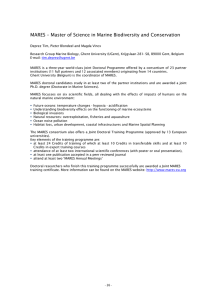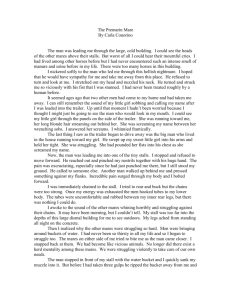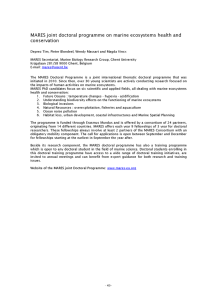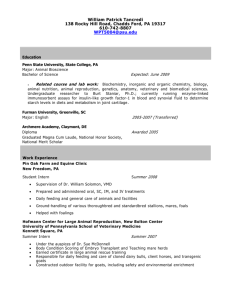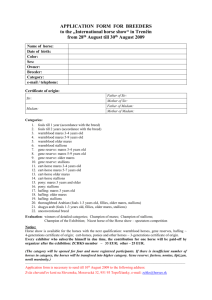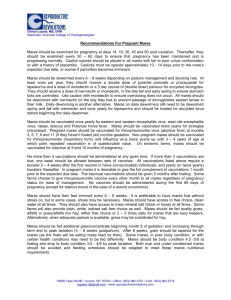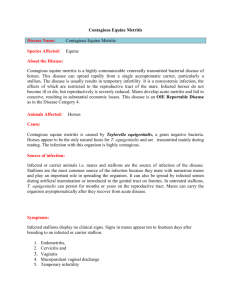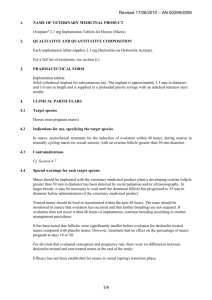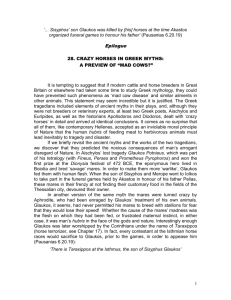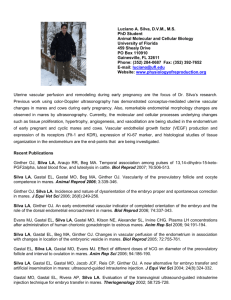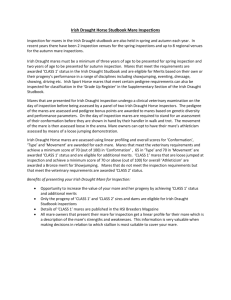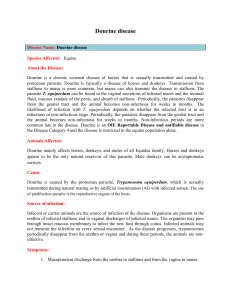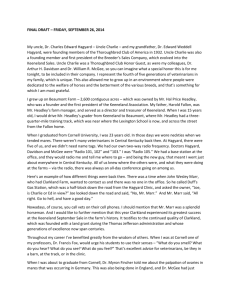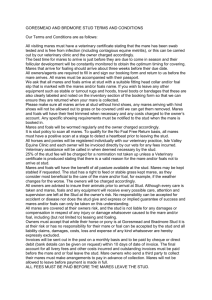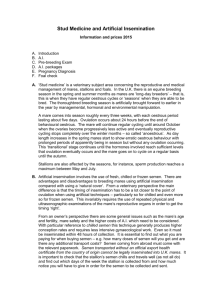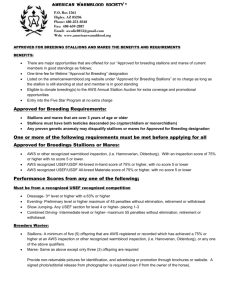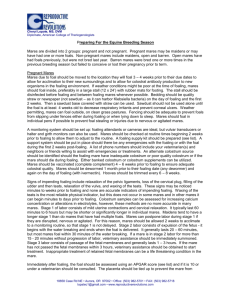Lactation tetany in mares
advertisement
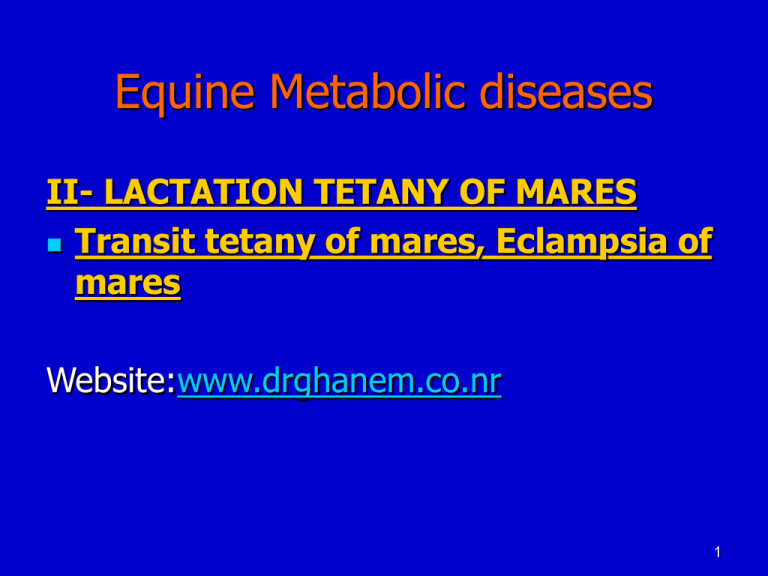
Equine Metabolic diseases II- LACTATION TETANY OF MARES Transit tetany of mares, Eclampsia of mares Website:www.drghanem.co.nr 1 Definition: It is a metabolic neuretic disease of lactating mares characterized clinically by stiffness in gait and tetany and biochemically by hypocalcaema 2 Incidence, occurrence and predisposing factor: 1-Most cases occur in lactating mares, either at about the l0th day after foaling or 1-2 days after weaning. 2-Mares have a heavy flow of milk. 3-Pregnant mares subjected to hard physical work or exercise (stress of work). 4-Pregnant mares during or after prolonged transport (stress of transport). 3 Etiology and pathogenesis 1- The basic constant biochemical finding is low serum calcium level (hypocalcemia) in which serum calcium level ranges between 4-8 mg% 2- Hypo- or Hypermagnesemia have been observed in some cases. 4 Clinical signs Clinical signs are related to the degree of hypocalcaemia, because: 1- When serum calcium level is higher than 8 mg%, the only clinical sign is increased excitability. 2- At levels of 4-8 mg %, there are tetanic spasms. 3- At levels less than 4 mg%, there are recumbency and stupor (state of unconsciousness). 5 The clinical signs proceed as follow: 1-Profuse sweating 2-Muscular fibrillation particularly of the masseter and shoulder region 3-Trismus (spasmodic contraction of M. of mastication) but no prolapse of 3rd eyelid 4-Normal pulse in early stages, but later becomes rapid and irregular. 5-Rapid, violent respiration accompanied with wide dilation of nostrils. 6-Normal temp. or slightly elevated. 7-Dysphagia (unable to swallow) 8- OLiguria or even anuria and constipation. 9- Difficulty in moving, stiffness in gait and incoordination. 10-Within 24 hours, the animal goes down then tetanic convulsions develop and death may occur about 48hrs. after onset of illness due to respiratory failure. 6 Profuse sweating 7 Tetanic spasm 8 Stiffness 9 Diagnosis I-History II- Clinical signs. III-laboratory diagnosis: Estimation serum calcium level usually between 4-8 mg% (normal around 10 mg%) IV-Therapeutic diagnosis Response to treatment with calcium preparations Differential diagnosis: tetanus and laminitis 10 laminitis Tetanus 11 Treatment and prevention I/V injection of 400-800ml C.B.G 25% causes rapid, complete recovery. If no response, repeated after 12 and 24 hours. N.B: One of the earliest signs of recovery is the voiding of large volume of urine. Prevention: Single IV or S/C. 10 millions I.U. crystalline vit. D immediately after foaling and repeated at weaning time for lactating mares. 12 13 Posters of Equine medicine 1. 2. 3. 4. 5. 6. 7. 8. 9. 10. Diseases of digestive system Diseases of respiratory system Diseases of urinary system Diseases of Cardiovascular system Diseases of Foals Diseases of nervous system Metabolic diseases Foal Diseases Diseases of sports medicine Diseases of skin and subcutaneous tissue 14
